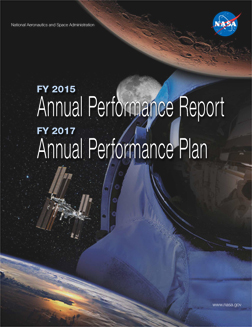- Home
- Agencies
- Department of Agriculture
- Department of Housing and Urban Development
- General Services Administration
- Department of Commerce
- Department of the Interior
- National Aeronautics and Space Administration
- Department of Defense
- Department of Justice
- National Science Foundation
- Department of Education
- Department of Labor
- Office of Personnel Management
- Department of Energy
- Department of State
- Small Business Administration
- Environmental Protection Agency
- Department of Transportation
- Social Security Administration
- Department of Health and Human Services
- Department of the Treasury
- U.S. Agency for International Development
- Department of Homeland Security
- Department of Veterans Affairs
- Goals
- Initiatives
- Programs
Primary tabs
Key to Changes
This text is Revised text
This word has been added to the text
This text is Last Published text
This word has been removed from the text
Modifed styling with no visual changes
Strategic Objective
Effectively manage NASA's diverse assets and workforce.
Strategic Objective
Overview
NASA’s workforce and institutional capabilities enable us to successfully conduct our missions. We are dedicated to innovation, bold ideas, and excellence, which enable us to provide the day-to-day operations required to support and achieve our missions.
People are our most important resource; without them, no mission can be achieved. We have a workforce that is skilled, competent, and dedicated. Our workforce is committed and passionate, and brings many dimensions of diversity, including ideas and approaches, to make our teams successful. To conduct our missions over the next 20 to 30 years, we must focus on attaining an increasingly diverse workforce with the right balance of skills and talents and provide an inclusive work environment in which employees with varying perspectives, education levels, skills, life experiences, and backgrounds work together and are fully engaged in NASA’s Mission.
Progress Update
NASA, in consultation with the Office of Management and Budget, has highlighted this strategic objective as a focus area for improvement.
Through the Strategic Review and the Agency’s other performance management processes, NASA reviews recent accomplishments and near term plans for the Agency’s strategic objectives and programs. Strategic Objective 3.1 covers NASA’s workforce and institutional capabilities. NASA has had several recent successes within this portfolio of activities, including success in diversity and equal opportunity, workforce satisfaction and engagement, communications, and sustainability and energy usage. For the fifth consecutive year, NASA was ranked as the top large agency for innovation and, for the third consecutive year, as the Best Place to Work in the Federal Government. Over the next several years, NASA’s critical steps under this strategic objective include investing in projects that reduce energy costs, demolishing un-needed infrastructure, renewing and consolidating facilities, continuing to use targeted outreach and recruitment efforts, focusing on activities that impact workforce innovation, and using current and emerging communications technologies, platforms and methods to reach increasingly broader and more diverse audiences. Specific performance measures for the next two years can be found in NASA’s FY 2016 and FY 2017 Annual Performance Plans.
The Strategic Review also addresses long-term strategic outcomes, alignment, and key management challenges for each strategic objective, as well as across NASA’s portfolio of activities. During last year’s Strategic Review, Strategic Objective 3.1 was rated as a Focus Area for Improvement, and is rated the same this year. Despite the successes noted above, challenges remain within Strategic Objective 3.1. Continued attention and resources are needed to address risks associated with deferred maintenance, aging infrastructure, and environmental compliance. In 10 years, a part of NASA’s vision for success for this strategic objective is for NASA’s institutional capabilities to enable us to provide the day-to-day operations required to support and achieve the Agency’s missions. However, about 83 percent of NASA’s infrastructure and facilities are currently beyond their constructed design life. Aging infrastructure from the Apollo era is costly to maintain and, in some cases, poses risk to mission operations. To address challenges associated with aging infrastructure, NASA is aggressively managing its facility portfolio to consolidate and modernize into fewer, more efficient and sustainable facilities. NASA has achieved some success in consolidating facilities, reducing energy costs, and demolishing unneeded infrastructure and will continue to use these strategies to manage its facilities portfolio. Additionally, NASA will continue to prioritize and triage maintenance and repair work to prevent or minimize facility failures and impacts to missions.
For more information, please see http://msd.hq.nasa.gov/. Highlighted achievements during FY 2015 are detailed in the FY 2015 Agency Financial Report. Additional details on the FY 2015 performance for supporting Performance Goals and Annual Performance Indicators are provided in NASA’s FY 2015 Annual Performance Report. Information on the strategies for achieving this strategic objective can be found in the 2014 NASA Strategic Plan.








